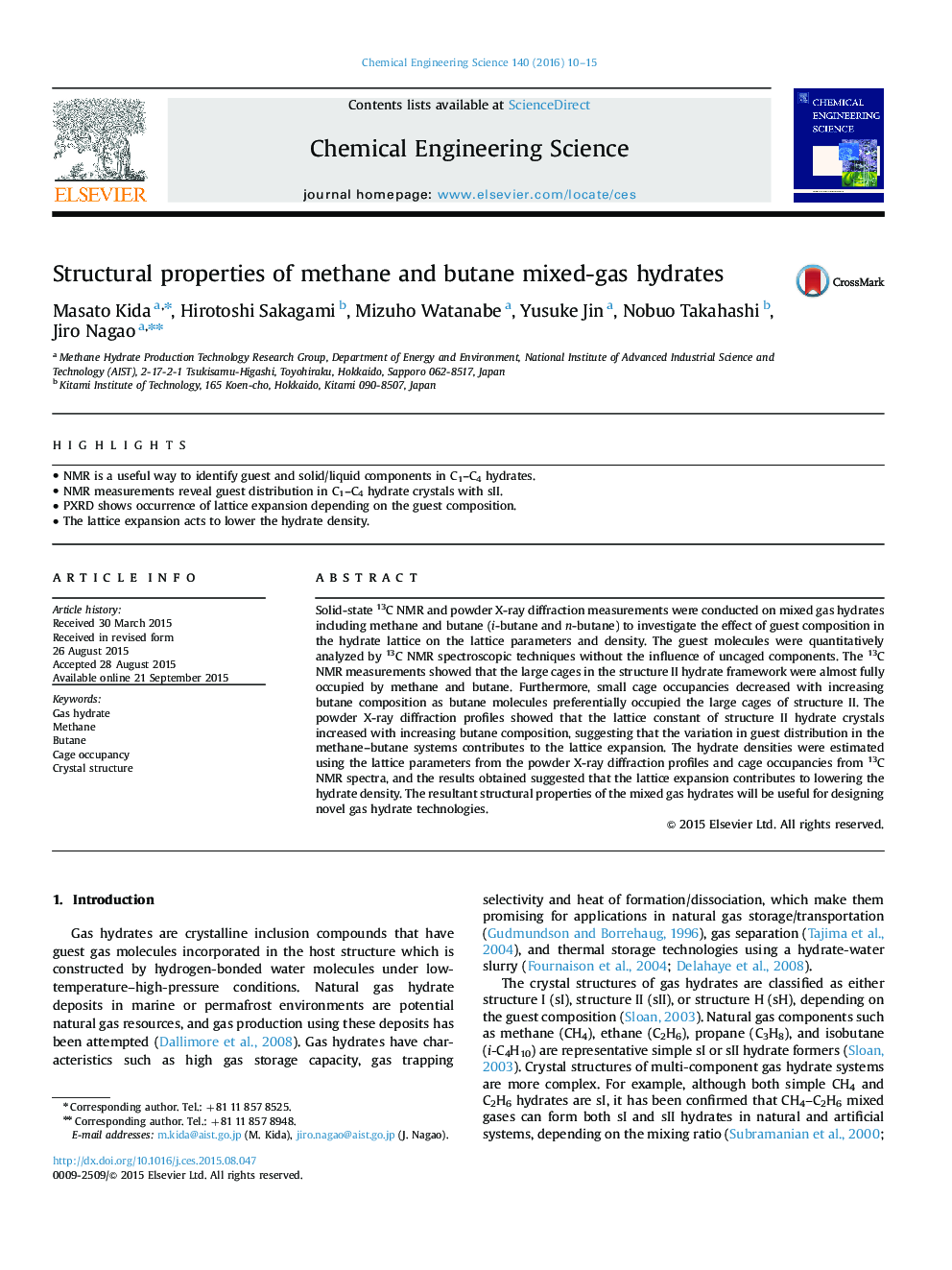| Article ID | Journal | Published Year | Pages | File Type |
|---|---|---|---|---|
| 154529 | Chemical Engineering Science | 2016 | 6 Pages |
•NMR is a useful way to identify guest and solid/liquid components in C1–C4 hydrates.•NMR measurements reveal guest distribution in C1–C4 hydrate crystals with sII.•PXRD shows occurrence of lattice expansion depending on the guest composition.•The lattice expansion acts to lower the hydrate density.
Solid-state 13C NMR and powder X-ray diffraction measurements were conducted on mixed gas hydrates including methane and butane (i-butane and n-butane) to investigate the effect of guest composition in the hydrate lattice on the lattice parameters and density. The guest molecules were quantitatively analyzed by 13C NMR spectroscopic techniques without the influence of uncaged components. The 13C NMR measurements showed that the large cages in the structure II hydrate framework were almost fully occupied by methane and butane. Furthermore, small cage occupancies decreased with increasing butane composition as butane molecules preferentially occupied the large cages of structure II. The powder X-ray diffraction profiles showed that the lattice constant of structure II hydrate crystals increased with increasing butane composition, suggesting that the variation in guest distribution in the methane–butane systems contributes to the lattice expansion. The hydrate densities were estimated using the lattice parameters from the powder X-ray diffraction profiles and cage occupancies from 13C NMR spectra, and the results obtained suggested that the lattice expansion contributes to lowering the hydrate density. The resultant structural properties of the mixed gas hydrates will be useful for designing novel gas hydrate technologies.
